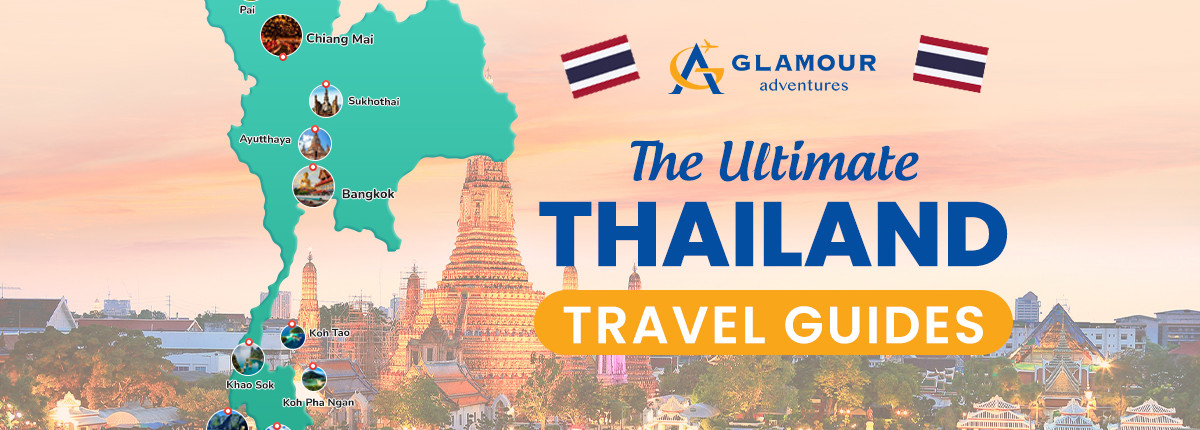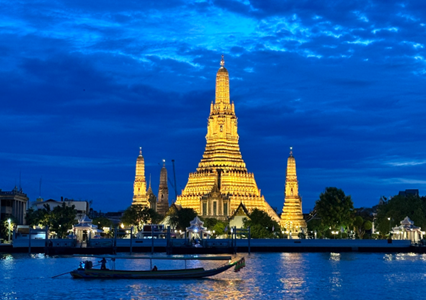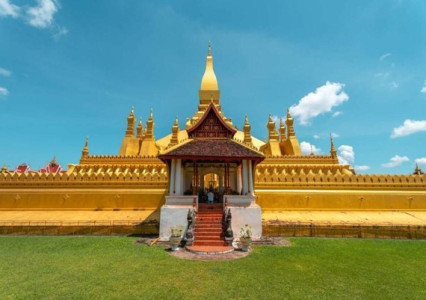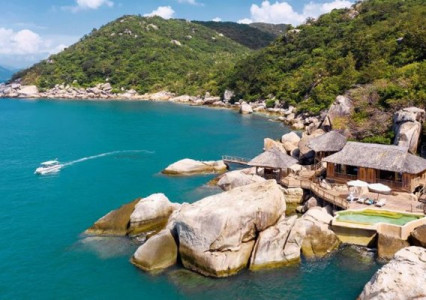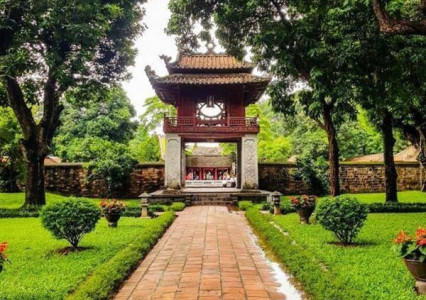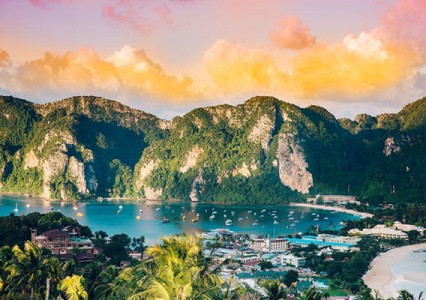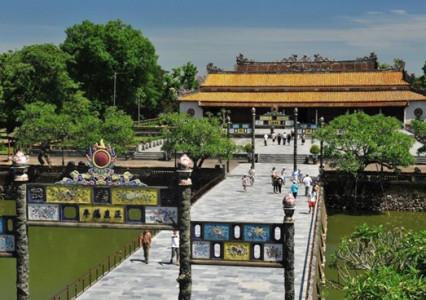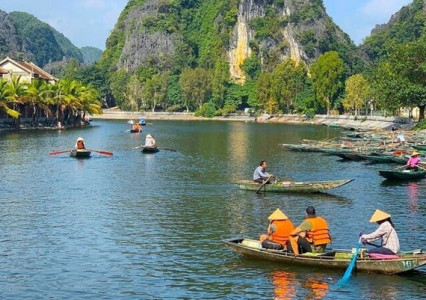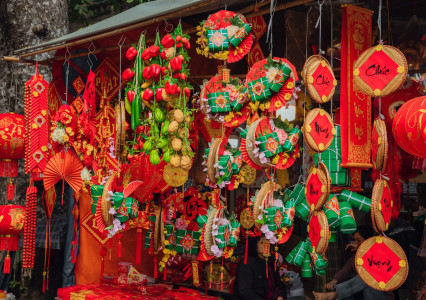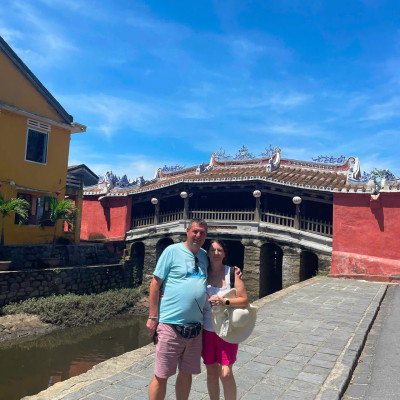Your Ultimate Travel Guide to Thailand: Everything You Need for an Unforgettable Holiday
1. Introduction to Thailand
Capital: Bangkok
Area: 513,120 km²
Population (2024): Approx. 70.3 million
Timezone: UTC +7
Situated at the crossroads of Southeast Asia, Thailand is a captivating country known for its golden temples, tropical beaches, bustling markets, and vibrant culture. Often referred to as the “Land of Smiles,” Thailand charms visitors with its warm hospitality, diverse landscapes, and dynamic cities—from the cosmopolitan energy of Bangkok to the tranquil mountains of Chiang Mai and the island paradises of Phuket and Koh Samui.
Thailand’s heritage is a rich tapestry woven from Buddhist traditions, royal history, and regional customs. Ornate temples, sacred rituals, and colorful festivals are an integral part of everyday life, reflecting the country’s deep spiritual roots. Traditional Thai dance, Muay Thai boxing, and classical arts flourish alongside a contemporary creative scene that continues to gain international attention.
Thai cuisine is another cornerstone of the nation’s identity—famous worldwide for its bold flavors, balance of sweet, sour, spicy, and salty elements, and the irresistible street food culture found in every town and city.
While Thailand has embraced modernity, it still treasures its traditions, offering travelers a harmonious mix of old and new. Whether you're backpacking through jungles, lounging by turquoise waters, or exploring ancient ruins, Thailand offers something for everyone. With its ease of travel, affordability, and deeply enriching experiences, Thailand remains a top destination for both first-time visitors and seasoned adventurers.
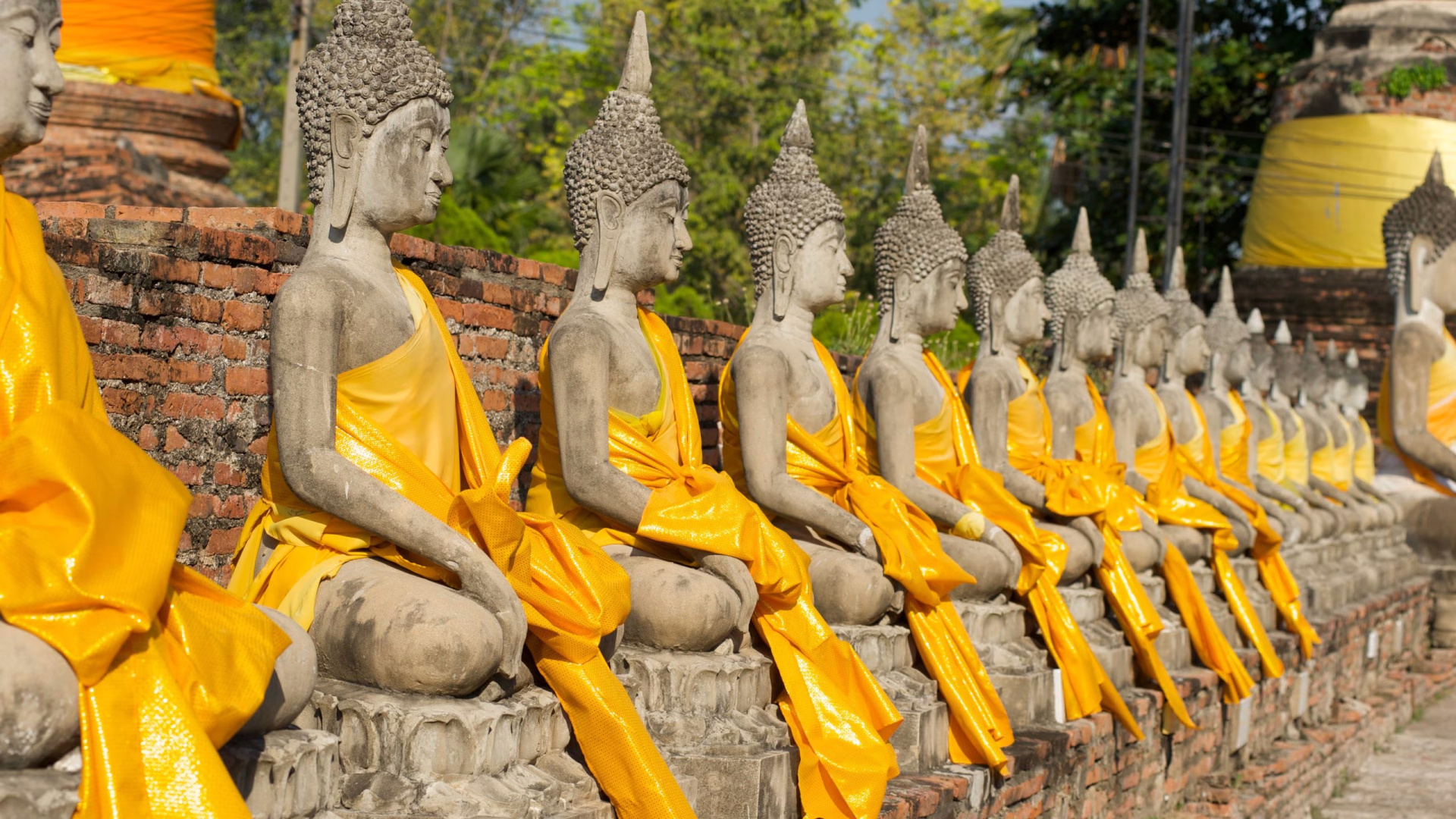
2. Geography of Thailand
Located in the center of mainland Southeast Asia, Thailand shares borders with Myanmar to the west and northwest, Laos to the north and northeast, Cambodia to the southeast, and Malaysia to the south. The country boasts a long coastline stretching along the Gulf of Thailand to the east and the Andaman Sea to the west, offering countless stunning beaches and island getaways. With a total area of approximately 513,120 km², Thailand features a diverse topography that ranges from forested mountains to fertile plains and tropical coastlines.
Terrain
Thailand’s landscape is divided into four distinct regions:
- The Northern Highlands, marked by forested mountains and cool valleys, are home to Thailand’s highest peak, Doi Inthanon (2,565 meters). This region is known for its hill tribes, trekking routes, and misty scenery.
- The Central Plains, often referred to as the “rice bowl of Asia,” are fertile lowlands nourished by the Chao Phraya River. This area is the heart of Thailand’s agriculture and economic activity, and includes the bustling capital, Bangkok.
- The Northeastern Plateau (Isan) features arid, undulating terrain and a distinct culture influenced by nearby Laos. Though drier than other regions, it is rich in historical ruins and traditional villages.
- The Southern Peninsula, extending between two seas, is dotted with limestone cliffs, coconut groves, rainforests, and idyllic islands. This region is famous for world-class beaches, marine biodiversity, and dramatic coastal scenery.
Climate
Thailand has a tropical climate with three distinct seasons:
- Hot Season (March to June) – Temperatures can soar above 35°C, especially in inland areas.
- Rainy Season (July to October) – Dominated by the southwest monsoon, this period brings frequent rainfall and high humidity.
- Cool Season (November to February) – Marked by lower humidity and pleasant temperatures, this is the most popular time for tourism.
Average annual temperatures range from 24°C to 34°C, and annual rainfall varies by region, with the south receiving the most precipitation.
Ecosystems
Thailand is home to an extraordinary range of ecosystems, from dense evergreen forests to coral reefs and mangrove swamps. The country supports over 15,000 species of plants, 1,000 species of birds, and hundreds of mammals, including elephants, gibbons, and the elusive Malayan tapir.
Thailand’s national parks and protected areas—such as Khao Yai National Park, Erawan Falls, and Similan Islands Marine Park—offer critical habitats for wildlife and serve as major eco-tourism destinations. Marine biodiversity is especially rich along the Andaman Sea coast, drawing divers from around the globe.
With its varied landscapes, abundant biodiversity, and year-round natural beauty, Thailand offers endless opportunities for adventure, discovery, and sustainable travel.
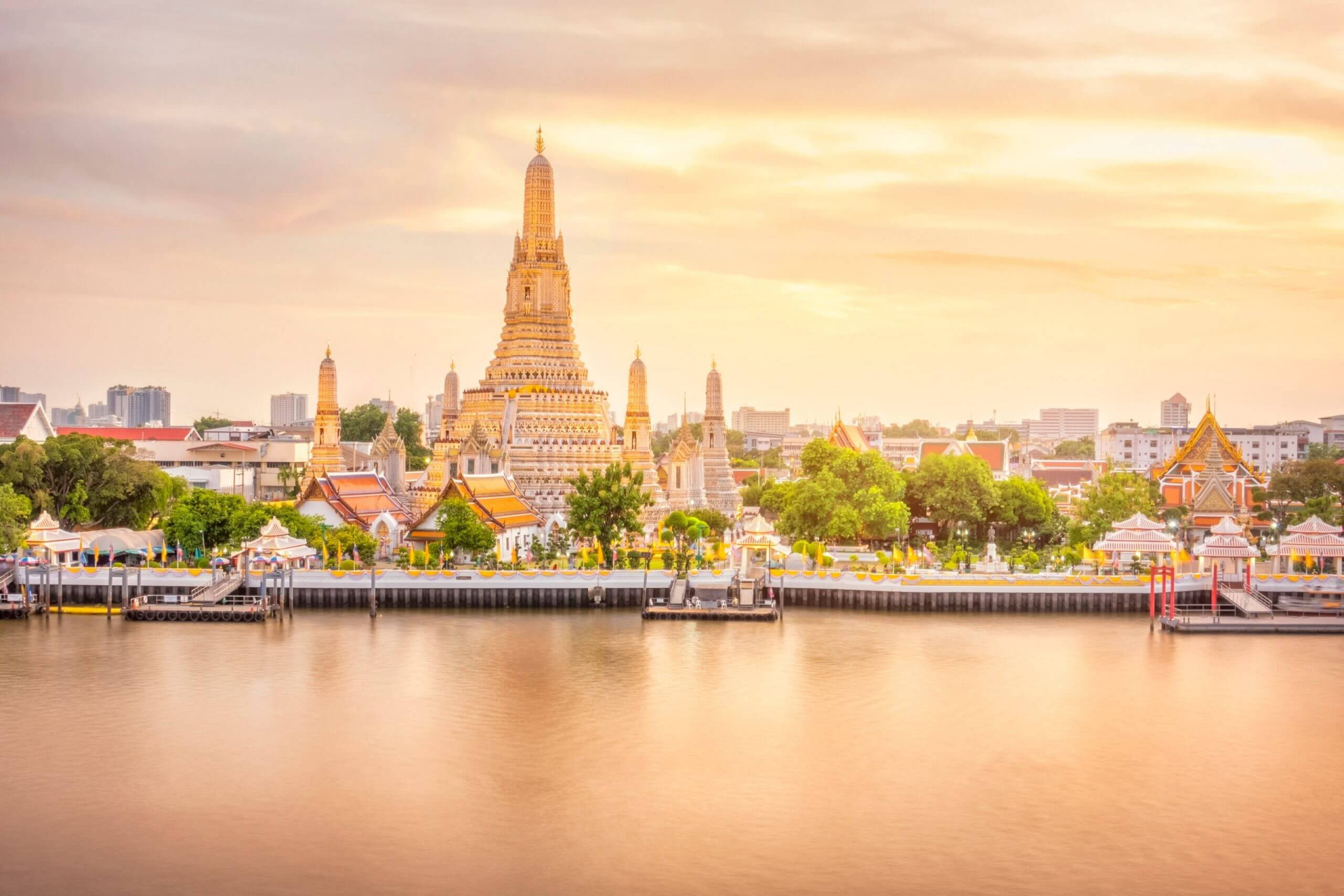
3. Visa & Entry Requirements for Thailand
Thailand is known for being a traveler-friendly destination, and its visa policies reflect that. Depending on your nationality and the length of your stay, you may be able to enter the country visa-free, apply for a visa on arrival, or obtain a tourist visa in advance. Understanding the requirements based on your passport will help you plan a smooth entry into the Land of Smiles.
Visa Exemption (Tourist Visa-Free Entry)
Citizens of over 60 countries—including the United States, Australia, the UK, and most EU countries—are eligible to enter Thailand without a visa for tourism purposes.
- Duration: 30 days (by air or land).
- Extensions: A 30-day extension is available at immigration offices inside Thailand for a fee (~1,900 THB).
- Requirements:
- Valid passport (at least 6 months validity)
- Proof of onward travel (e.g. return ticket)
- Proof of sufficient funds (e.g. 10,000 THB per person)
Note: As of 2024, the Thai government may extend visa-free stays for select countries to 60 days—check official updates close to your travel dates.
Visa on Arrival (VOA)
Citizens of certain countries (e.g., India, China, and some Eastern European nations) can apply for a Visa on Arrival at select airports and land border checkpoints.
- Duration: 15 days (not extendable)
- Fee: 2,000 THB (may be waived during promotion periods)
- Documents needed:
- Passport valid for at least 30 days
- Confirmed return flight within 15 days
- Hotel booking and proof of funds
Tourist Visa (Single or Multiple Entry)
If you plan to stay longer or are not eligible for visa-free entry, you can apply for a Tourist Visa at a Thai embassy or consulate abroad.
- Single-entry visa:
- Stay up to 60 days
- Can be extended by 30 days within Thailand
- Multiple-entry visa:
- Valid for 6 months
- Allows multiple 60-day stays (must exit and re-enter for each entry)
Application requirements usually include:
- Visa application form
- Passport-sized photo
- Flight and hotel bookings
- Financial proof (e.g., bank statements)
- Visa fee (varies by country)
e-Visa System
Thailand now offers an online e-visa system for many nationalities. You can apply, upload documents, and receive approval online before traveling.
- Website: https://thaievisa.go.th
- Recommended to apply at least 15 days before travel
Special Notes for Land Border Crossings
Travelers using land borders (e.g., from Laos, Cambodia, or Malaysia) should note that visa-exempt entries may be limited to twice per calendar year.
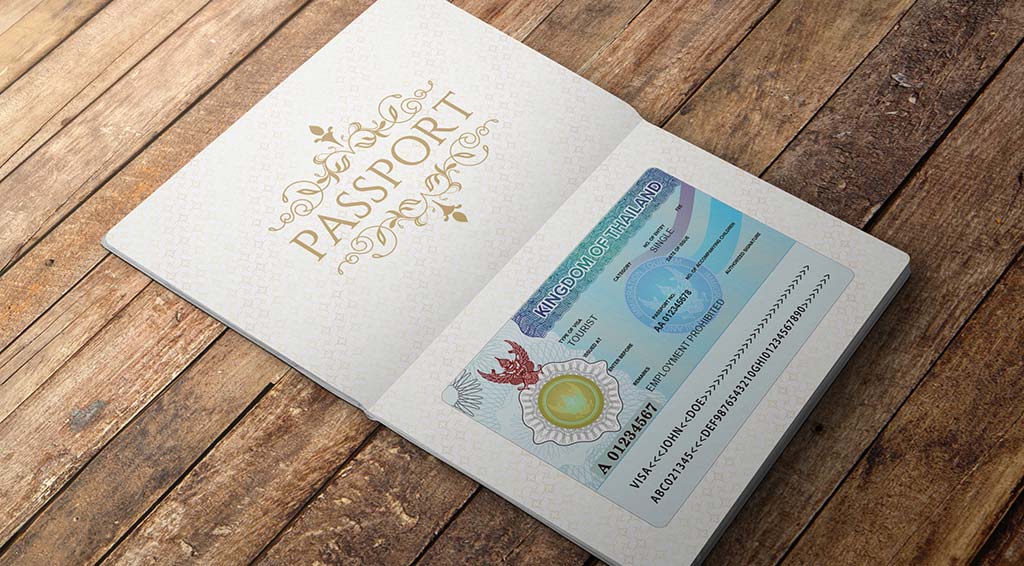
4. Best Time to Travel to Thailand
Thanks to its tropical climate and regional diversity, Thailand is a year-round destination. However, the cool and dry season from November to February is widely regarded as the best time to visit, especially for sightseeing, beach holidays, and outdoor adventures. Thailand’s weather varies between the north and the south, so understanding the country’s three main seasons and regional differences can help you plan the perfect trip.
Cool & Dry Season (November to February): Best for Sightseeing & Comfortable Travel
This is the most popular travel season in Thailand. With average temperatures ranging from 22–30°C, low humidity, and blue skies, it’s ideal for exploring cities, temples, and nature.
- Bangkok & Central Thailand: Enjoyable weather for markets, palaces, and boat tours on the Chao Phraya River.
- Chiang Mai & the North: Perfect for trekking, visiting hill tribes, and attending festivals like Yi Peng (Lantern Festival) in November.
- Southern Beaches: Both the Gulf of Thailand (Koh Samui) and the Andaman Sea side (Phuket, Krabi) offer excellent beach weather.
Hot Season (March to May): Best for Festivals & Island Escapes
Temperatures soar to 35–40°C in many areas, making this season better suited for beach lovers than city explorers. It's also festival time across the country.
- Songkran Festival (mid-April): Thailand’s famous water festival marks the traditional New Year with countrywide celebrations and street water fights.
- Islands like Koh Samui and Koh Tao are great for diving, swimming, and sunbathing despite the heat.
Rainy Season (June to October): Lush Landscapes & Fewer Tourists
The monsoon season brings daily showers—often short and intense in the afternoon or evening—along with high humidity. Average temperatures hover around 26–34°C.
- Chiang Mai & the North: The landscape becomes verdant, ideal for eco-tourism and fewer crowds.
- Isan (Northeast Thailand): Enjoy rural beauty, rice paddies, and traditional life with few tourists.
- Andaman Coast: Heavier rain can affect sea conditions, though travel is still possible with flexibility.
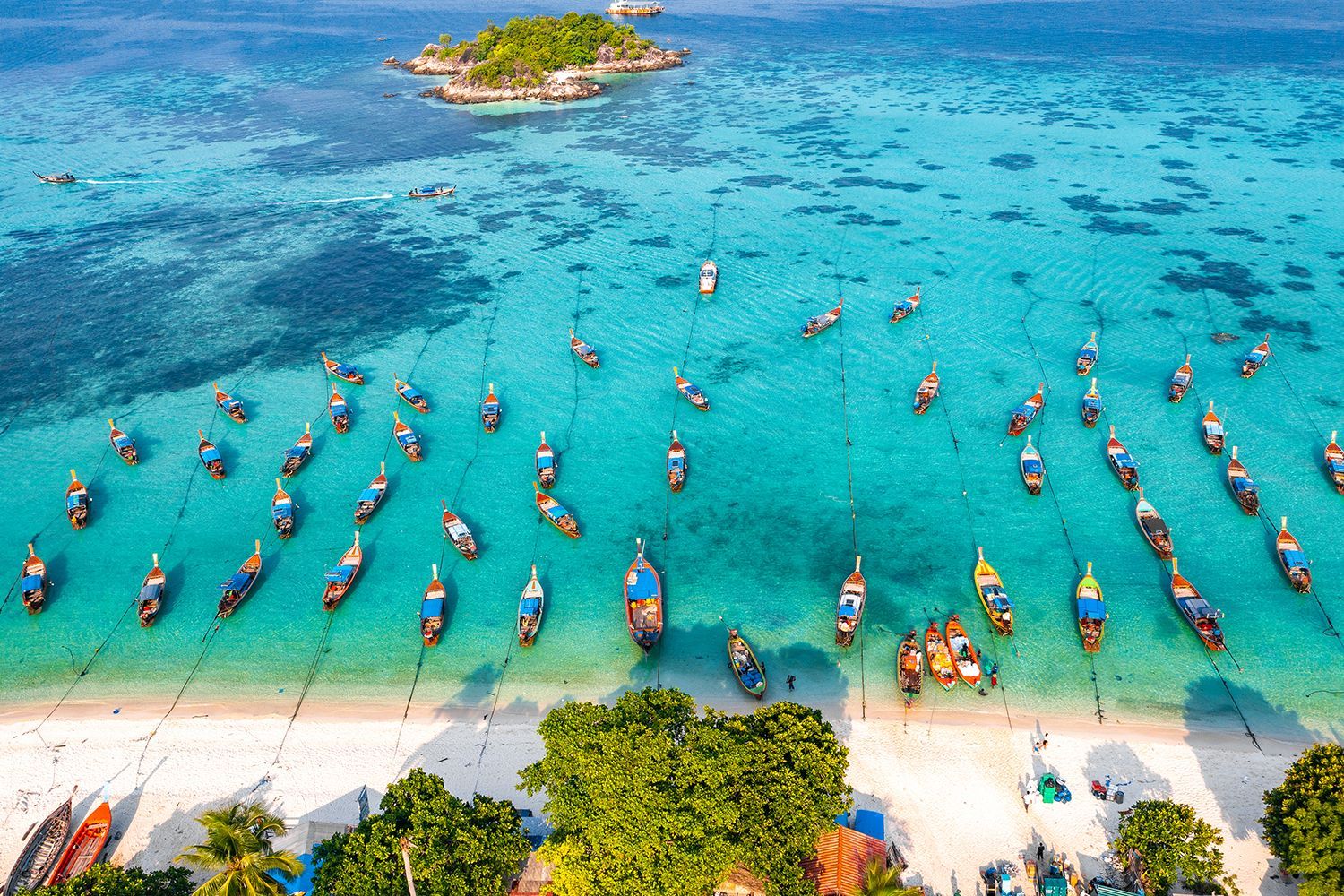
| Interest | Best Months | Notes |
|---|---|---|
| Temple sightseeing | Nov – Feb | Cool weather, fewer showers |
| Beach holidays (Andaman) | Nov – Mar | Ideal for Phuket, Krabi, Phi Phi |
| Beach holidays (Gulf) | Jan – Aug | Great for Koh Samui, Koh Phangan |
| Festivals & culture | Apr (Songkran) | Water fights, fun, and national celebrations |
| Lush landscapes | Jul – Oct | Beautiful green scenery, great for photos |
| Budget travel | May – Oct | Off-season rates, fewer tourists |
Summary:
- Best overall time to visit: November to February
- Best for beach holidays: November to April (Andaman), January to August (Gulf)
- Best for culture & festivals: April
- Best for photographers & nature lovers: July to October
- Best for budget travelers: May to October
5. Best Places to Visit in Thailand
From glittering temples and ancient ruins to sun-drenched islands and misty mountain towns, Thailand is a treasure trove of unforgettable destinations. Whether you're drawn by cultural heritage, outdoor adventure, or tropical relaxation, Thailand offers something for every kind of traveler. Here are some of the best places to visit, each offering its own unique charm.
Bangkok – The Vibrant Capital
A heady mix of tradition and modernity, Bangkok is Thailand’s fast-paced heart. Grand palaces, bustling street markets, and a legendary food scene make this city a must-visit. The ornate Grand Palace, sacred Wat Pho (home of the reclining Buddha), and riverside temples like Wat Arun offer glimpses into Thai spiritual life. After sunset, Bangkok comes alive with rooftop bars, night markets, and lively street food alleys where you can try everything from pad thai to grilled skewers.
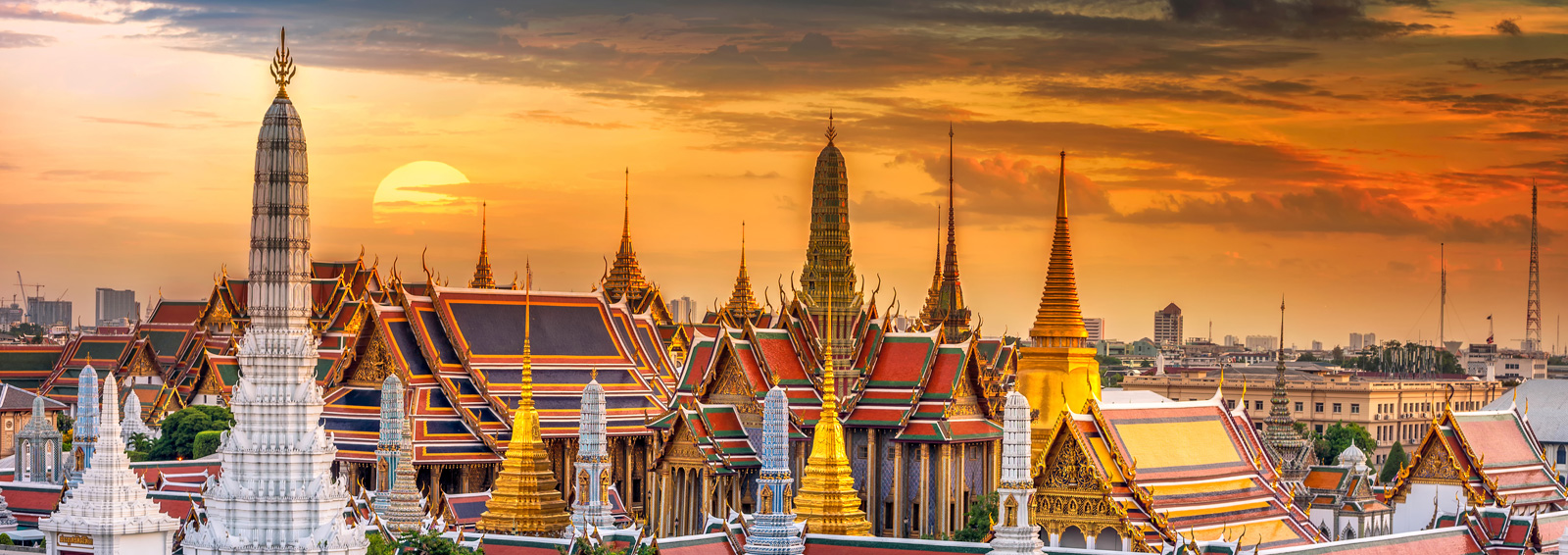
Chiang Mai – Culture and Mountains in the North
Nestled in the mountainous north, Chiang Mai offers a more laid-back pace along with deep cultural roots. Surrounded by ancient city walls and moats, it’s a gateway to more than 300 temples, including the famous Wat Phra That Doi Suthep perched on a mountaintop. The city is also a hub for Thai cooking classes, elephant sanctuaries, and weekend markets. Come in November to witness the magical Yi Peng Lantern Festival, when thousands of lanterns are released into the sky.
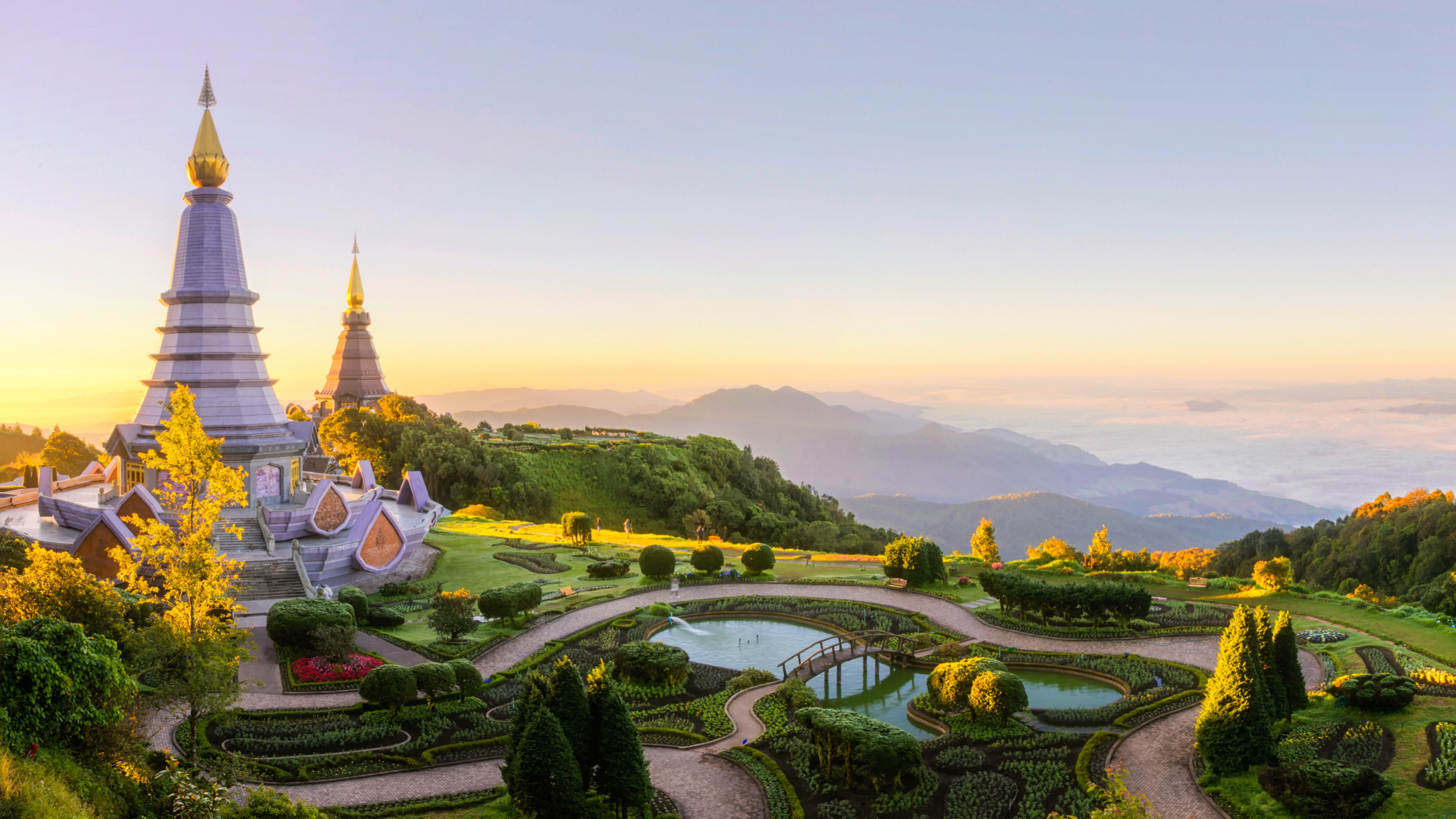
Ayutthaya – Ruins of a Glorious Past
Once the capital of the Siamese Kingdom, Ayutthaya is now a UNESCO World Heritage Site known for its impressive temple ruins, crumbling statues, and atmospheric charm. A day trip from Bangkok lets you wander through historical sites like Wat Mahathat, where a Buddha head entwined in tree roots draws visitors and photographers alike.
Phuket – The Island That Has It All
Thailand’s largest island, Phuket, is a destination that caters to all types of travelers. Whether you're seeking luxury resorts, vibrant nightlife, or quiet beaches, you'll find it here. Patong Beach is famous for its party scene, while Kata, Karon, and Nai Harn offer more peaceful settings. Day trips to nearby islands like James Bond Island or Similan Islands for snorkeling and diving are also popular.
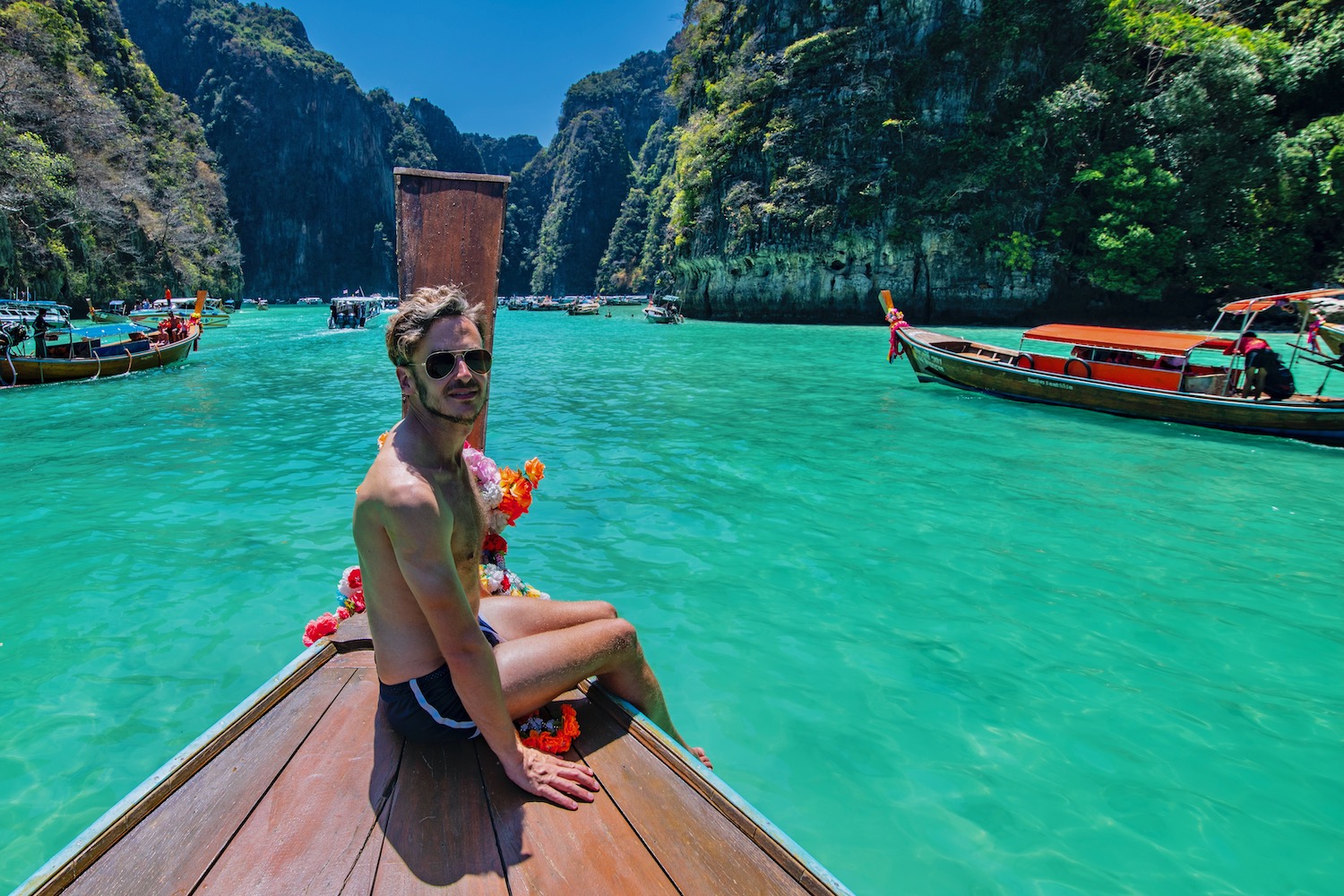
Krabi – Dramatic Landscapes and Island Hopping
With its towering limestone cliffs, turquoise waters, and white-sand beaches, Krabi is postcard-perfect. Base yourself in Ao Nang or Railay Beach, where you can rock climb or kayak through hidden lagoons. Take boat tours to stunning spots like Koh Hong, Phi Phi Islands, and Four Islands, all known for their breathtaking scenery and marine life.
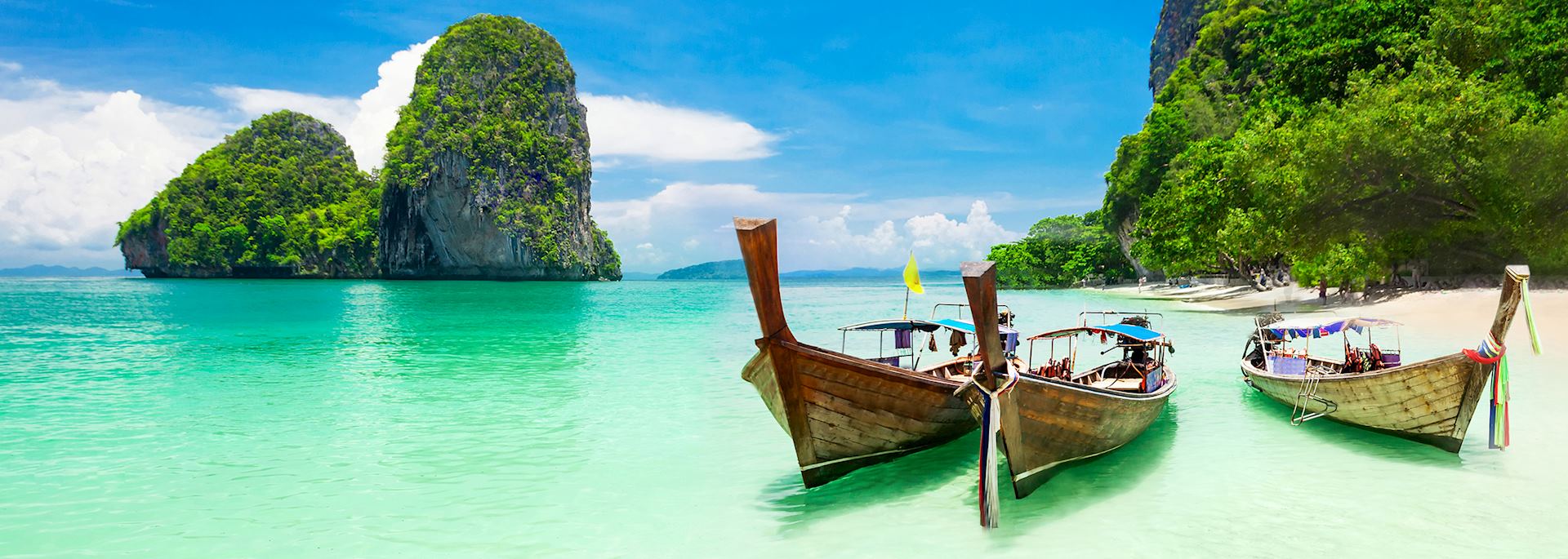
Pai – A Bohemian Retreat in the Mountains
Tucked away in a lush valley near the Myanmar border, Pai is a favorite among backpackers and nature lovers. Known for its relaxed vibe, hot springs, waterfalls, and quirky cafés, it offers a peaceful escape. Motorbike through rice paddies, explore Pai Canyon, and watch the sun set over the mountains—it’s slow travel at its best.
Koh Samui – Island Luxury and Laid-back Charm
Located in the Gulf of Thailand, Koh Samui is famous for its palm-fringed beaches, upscale resorts, and lush coconut groves. Chaweng Beach buzzes with nightlife, while Lamai offers a quieter alternative. Visit Big Buddha Temple, hike to waterfalls, or take a boat to the nearby Ang Thong Marine Park for kayaking and snorkeling.
Chiang Rai – Temples and Art in the Far North
Often overshadowed by Chiang Mai, Chiang Rai deserves attention for its surreal and artistic landmarks. The White Temple (Wat Rong Khun) is a dazzling blend of tradition and contemporary art, while the Blue Temple and Black House add to the city’s mysterious and creative appeal. It’s also a gateway to the Golden Triangle region, where Thailand, Laos, and Myanmar meet.
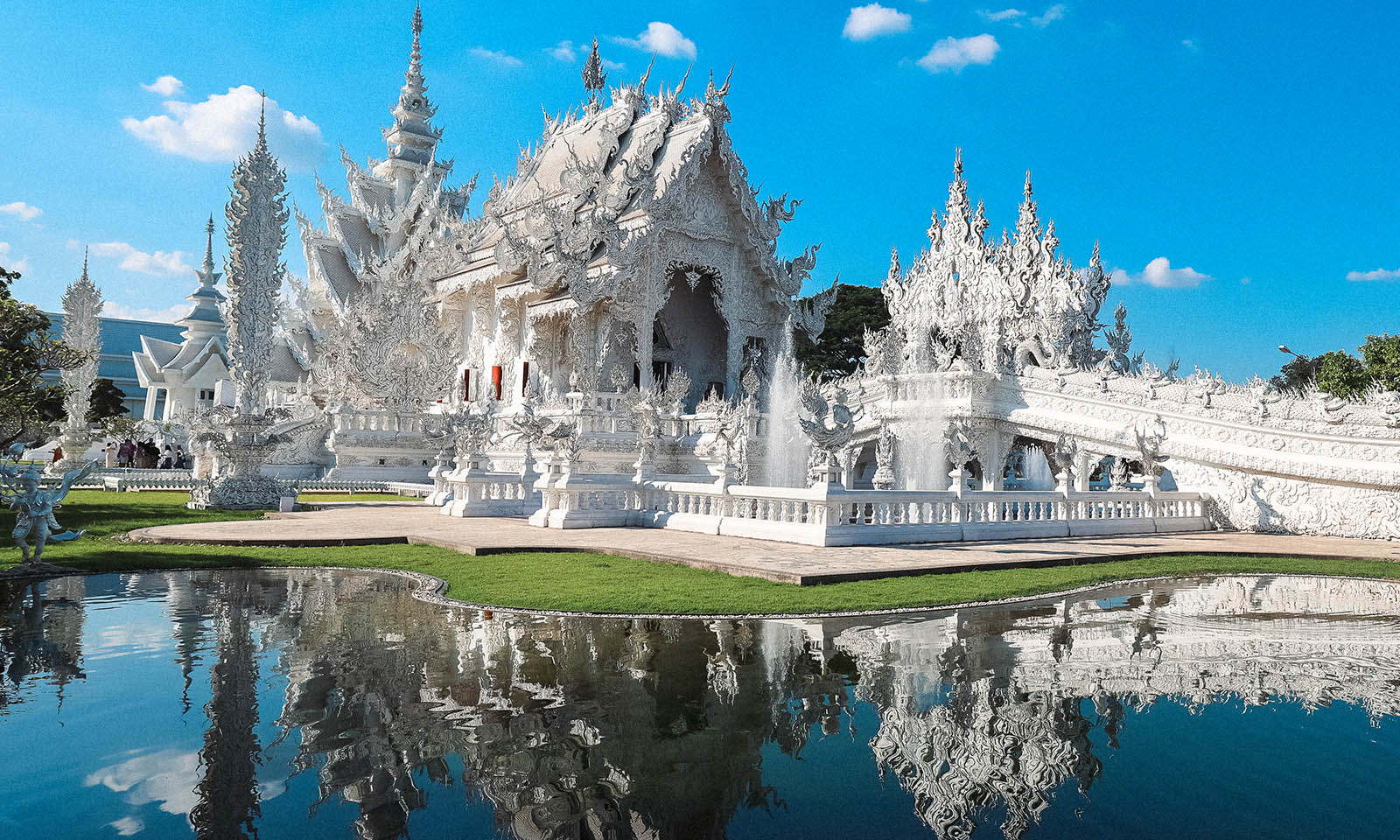
Sukhothai – The Birthplace of Thai Civilization
Step back in time in Sukhothai, Thailand’s first capital. The Sukhothai Historical Park, another UNESCO-listed site, is home to serene Buddha statues, lotus-filled ponds, and ancient chedis. Biking through the park at sunrise or sunset is one of the most peaceful and inspiring experiences in the country.
6. National Dishes You Can’t Miss in Thailand
Thai cuisine is world-famous for its vibrant flavors, fresh ingredients, and perfect harmony of sweet, sour, salty, and spicy notes. Eating your way through Thailand isn’t just a pleasure—it’s a cultural experience. From humble street carts to elegant restaurants, these iconic dishes capture the essence of Thai cooking. Here are the must-try national dishes you shouldn't miss:
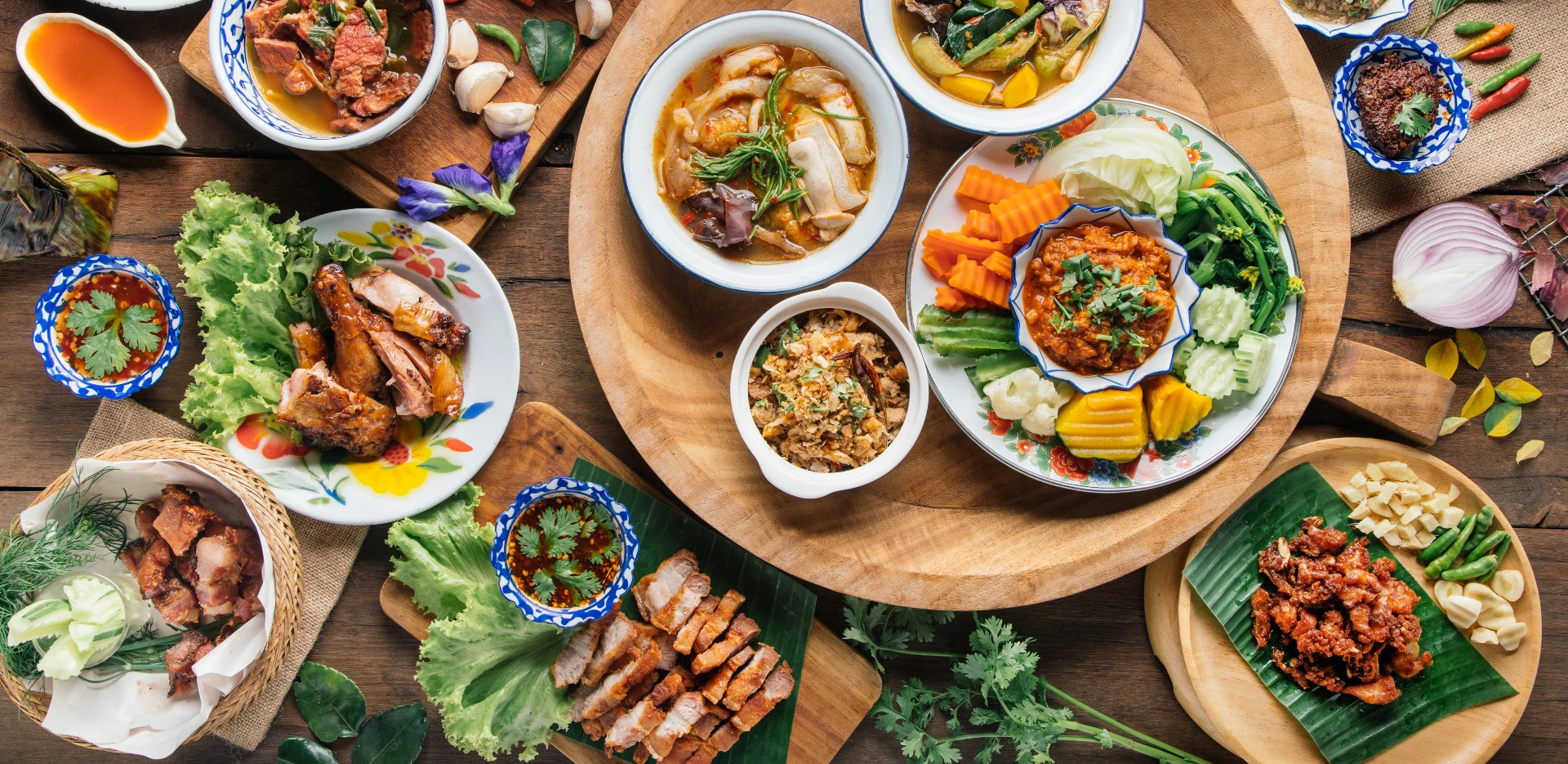
Pad Thai – Thailand’s Signature Stir-Fried Noodles
Perhaps Thailand’s most internationally recognized dish, Pad Thai is a delicious combination of stir-fried rice noodles, egg, tofu or shrimp, bean sprouts, peanuts, and lime. Sweet tamarind sauce gives it a distinct tang, while the optional chili flakes let you dial up the heat to your liking. Found everywhere from street stalls to upscale bistros, Pad Thai is a classic you’ll want to enjoy more than once.
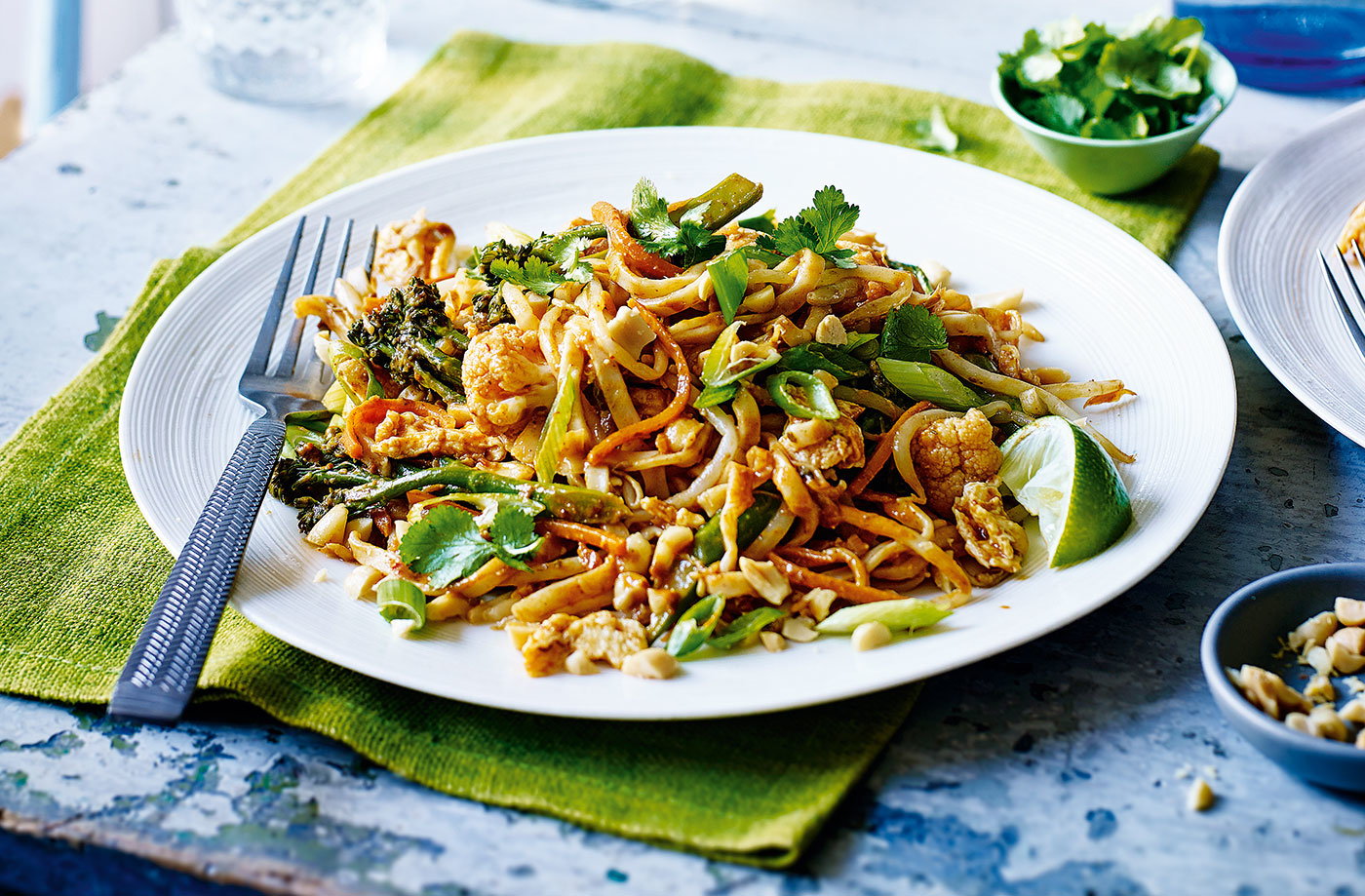
Tom Yum Goong – Spicy and Sour Shrimp Soup
A bowl of Tom Yum Goong is a masterclass in Thai flavor balance. Made with shrimp, lemongrass, galangal, kaffir lime leaves, chili, and lime juice, this soup delivers a spicy, sour punch that’s incredibly refreshing. Served clear or with a dash of coconut milk for richness, it’s a staple in Thai households and restaurants alike.
Green Curry (Gaeng Keow Wan)
Green curry is one of Thailand’s most beloved curries—spicy, creamy, and deeply aromatic. Cooked with green chili paste, coconut milk, Thai basil, and tender slices of chicken or beef, it’s typically served with jasmine rice or rice noodles. The bright green color comes from fresh green chilies and herbs, giving it both heat and freshness.
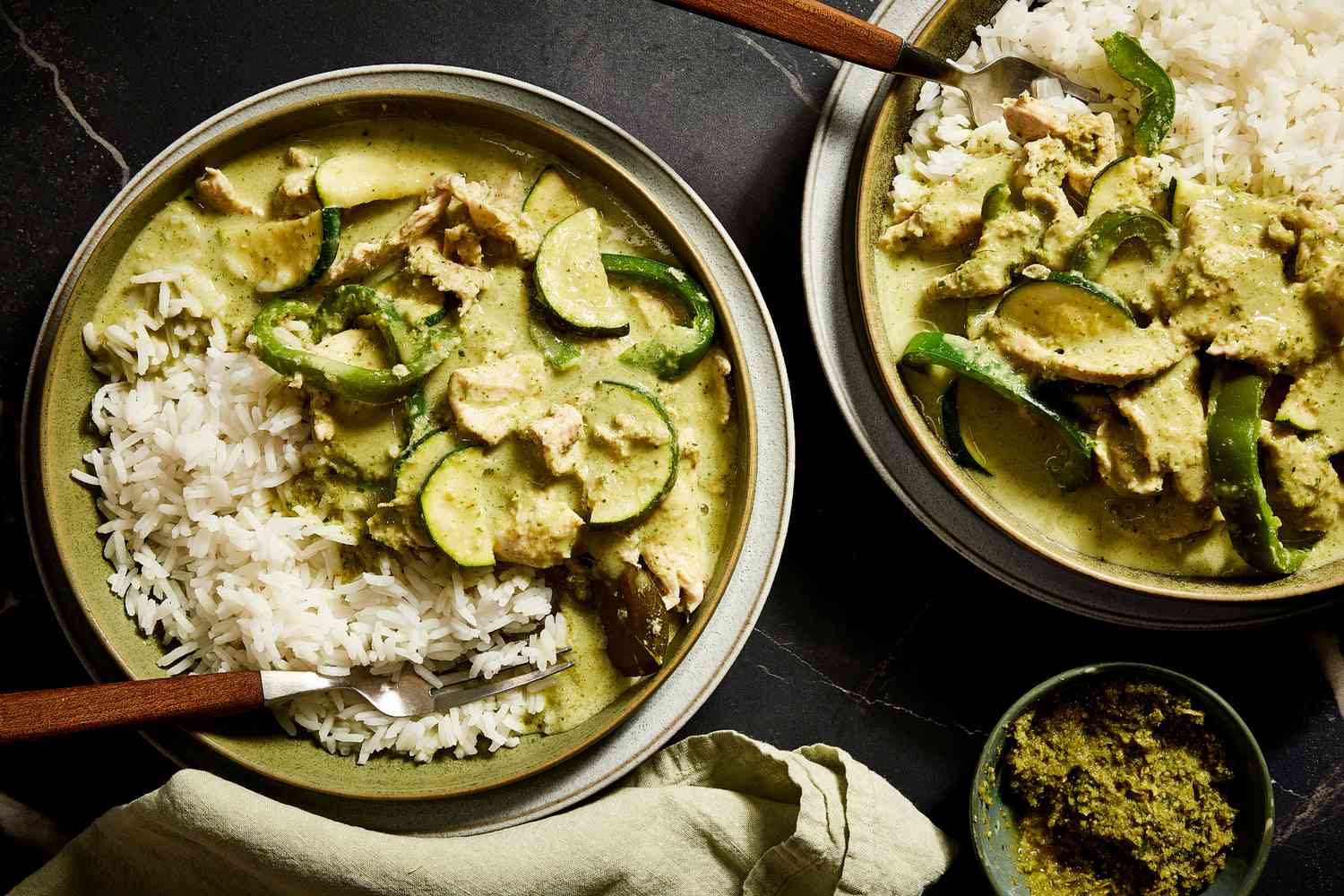
Som Tum – Spicy Green Papaya Salad
Hailing from the northeast (Isan region), Som Tum is a fiery, tangy salad made from shredded green papaya, tomatoes, green beans, peanuts, dried shrimp, and chili, all pounded together in a mortar. The flavor is intense—sour, salty, spicy, and just a hint of sweetness—making it a favorite street food for locals and adventurous eaters.
Massaman Curry – Thai-Muslim Comfort Food
A mellow and hearty dish influenced by Indian and Muslim cuisine, Massaman Curry features tender chunks of beef or chicken simmered in coconut milk with cinnamon, cardamom, potatoes, and roasted peanuts. Rich and slightly sweet, it’s often served with rice and is ideal for those who prefer a milder curry.
Khao Pad – Thai Fried Rice
Simple but satisfying, Khao Pad is Thailand’s take on fried rice. It usually includes egg, garlic, onions, vegetables, and your choice of protein like shrimp, chicken, or crab. It’s often garnished with cucumber slices, lime wedges, and prik nam pla (a spicy fish sauce condiment), offering a perfect balance of comfort and flavor.
Pad Kra Pao – Holy Basil Stir-Fry
A popular Thai lunch dish, Pad Kra Pao features minced meat (usually pork or chicken) stir-fried with garlic, chili, and holy basil, then served over rice and topped with a crispy fried egg. It’s fiery, aromatic, and widely considered the go-to “fast food” for locals.
Mango Sticky Rice (Khao Niew Mamuang)
Thailand’s most famous dessert, Mango Sticky Rice, pairs sweet, ripe mango slices with sticky rice soaked in sweetened coconut milk. The contrast of warm, creamy rice with cold, juicy mango is pure indulgence. It’s seasonal (best during mango season, April–June) but available year-round in most cities.
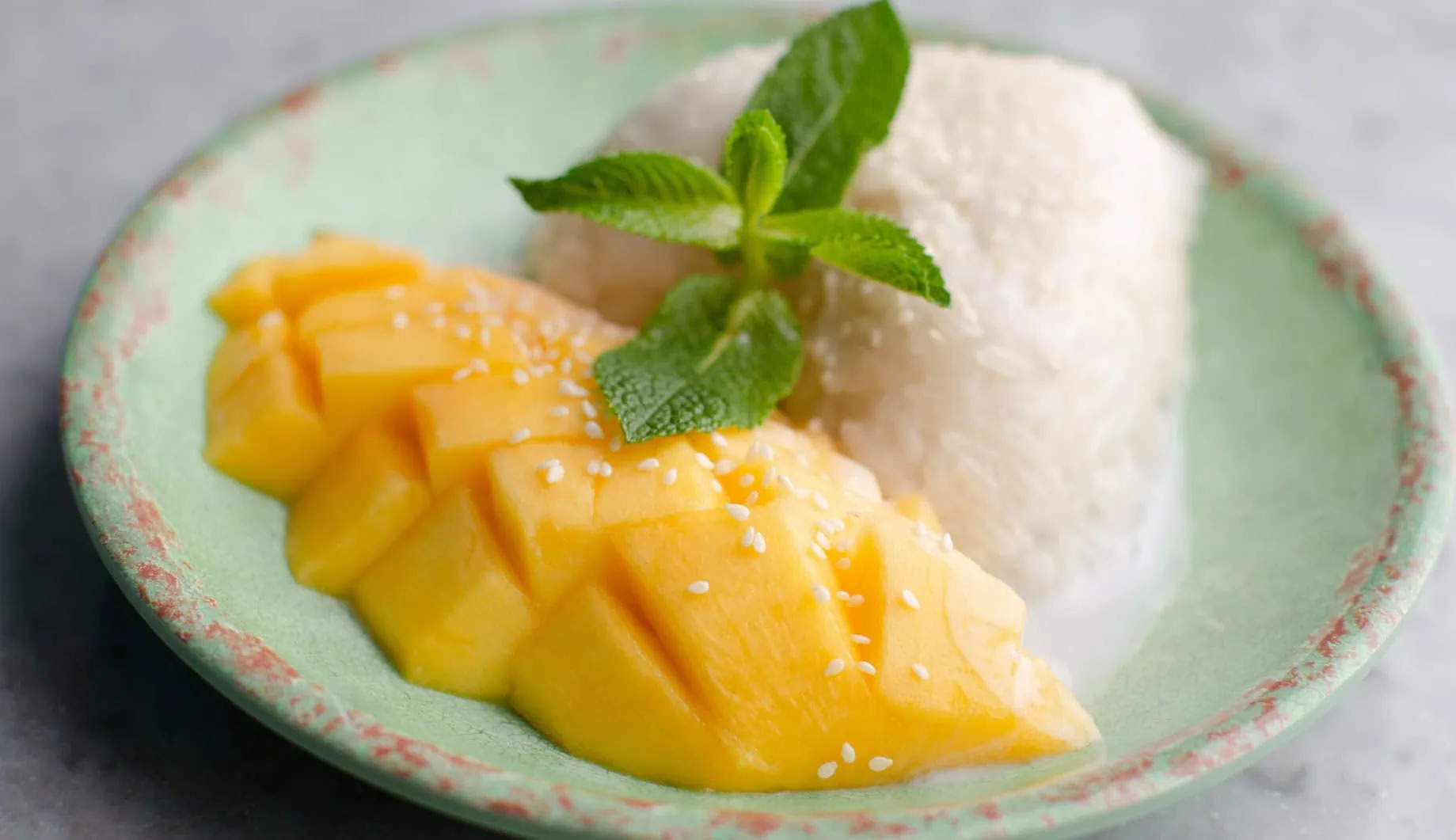
7. Holidays & Special Events in Thailand
Thailand’s calendar is rich with colorful festivals, spiritual observances, and royal ceremonies that reflect the nation’s deep cultural heritage and joyful spirit. From water-soaked celebrations to candlelit temple processions, these events offer travelers unforgettable insights into Thai life. Whether rooted in Buddhism, ancient seasonal cycles, or modern monarchy, each holiday is a window into the soul of the country.
Songkran – Thai New Year
When: April 13–15
Where: Nationwide
Thailand’s most iconic festival, Songkran marks the Thai New Year with water fights, family gatherings, and merit-making at temples. What began as a symbolic washing away of bad luck has become a nationwide party, especially in cities like Chiang Mai and Bangkok, where streets turn into joyful battlegrounds of water. It’s a time of cleansing, renewal, and pure fun.

Loy Krathong & Yi Peng – The Festival of Lights
When: November (full moon of the 12th lunar month)
Where: Best seen in Chiang Mai, Sukhothai, Bangkok
Loy Krathong is one of Thailand’s most enchanting festivals. People float decorated banana-leaf rafts ("krathongs") on rivers to honor the water goddess and release negativity. In northern Thailand, it coincides with Yi Peng, when thousands of sky lanterns are released—creating a magical scene of glowing orbs drifting into the night sky.
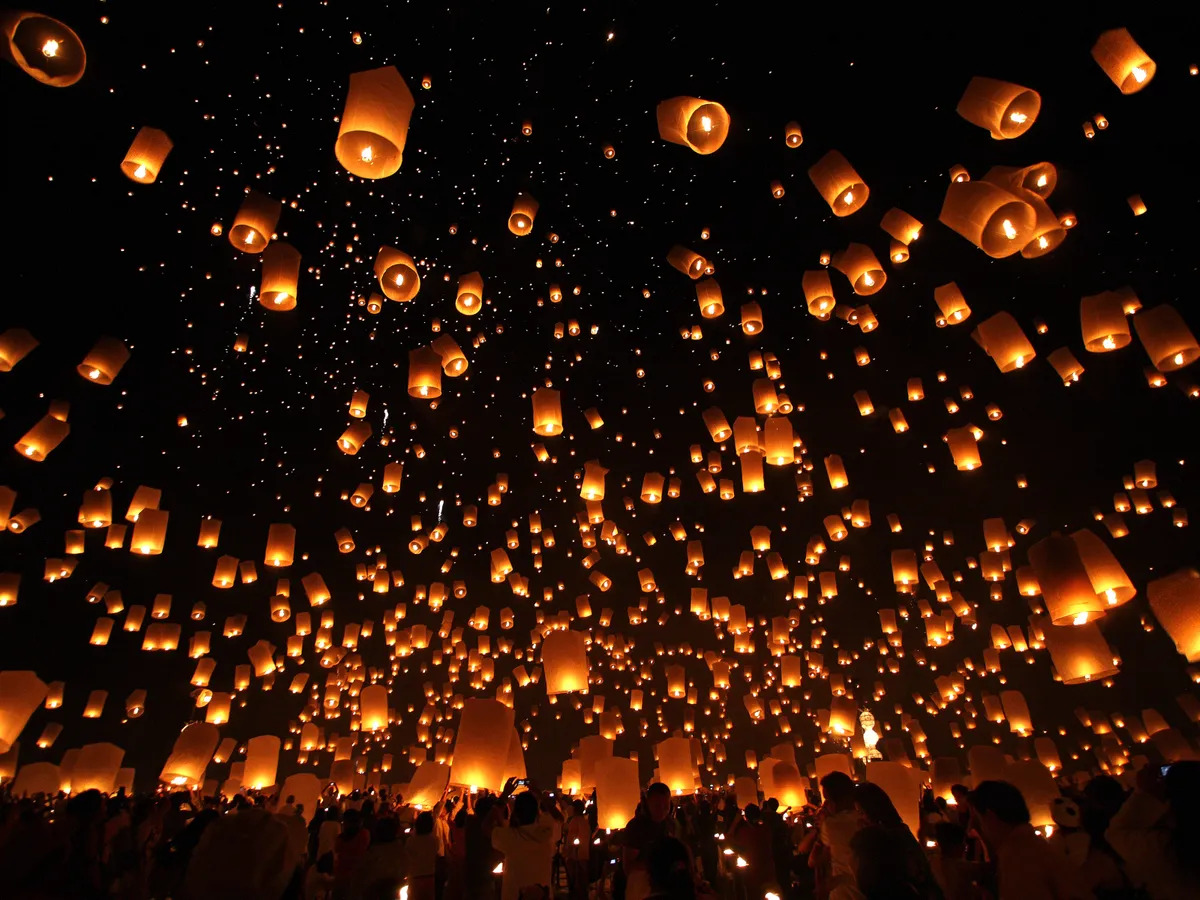
Visakha Bucha Day
When: Usually in May (full moon of the 6th lunar month)
Where: Nationwide
This solemn Buddhist holiday commemorates the birth, enlightenment, and passing of the Buddha. Temples are filled with devout worshippers making merit, listening to sermons, and joining candlelit processions. It’s a quiet, reflective day with no alcohol sales and limited commercial activity.
Makha Bucha & Asalha Bucha Days
When: February (Makha Bucha), July (Asalha Bucha)
Where: Nationwide
Both are significant Buddhist days marked by temple visits, chants, and acts of generosity. Makha Bucha honors a spontaneous gathering of 1,250 monks during the Buddha’s time, while Asalha Bucha commemorates the Buddha’s first sermon. These holidays are spiritual and meditative, with a calm, respectful atmosphere.
King’s and Queen’s Birthdays
- King’s Birthday (Father’s Day): December 5
- Queen Mother’s Birthday (Mother’s Day): August 12
These royal birthdays are also celebrated as national Father’s and Mother’s Days. Citizens show respect by wearing yellow (for the King) or blue (for the Queen), giving flowers, and participating in candlelight ceremonies. Streets and public buildings are decorated, and many locals express deep reverence for the monarchy.
Chinese New Year
When: January or February (lunar calendar)
Where: Bangkok’s Chinatown, Phuket, Chiang Mai
Celebrated by Thailand’s large Chinese-Thai community, Chinese New Year brings lion dances, red lanterns, fireworks, and feasting. While not a public holiday, the energy and festivities in major cities make it a memorable time to visit.
Royal Ploughing Ceremony
When: May (date varies)
Where: Sanam Luang, Bangkok
A royal Brahmin ritual that signals the start of rice-planting season, this ancient tradition involves sacred oxen, symbolic offerings, and predictions about the upcoming harvest. It reflects the close ties between Thai royalty, agriculture, and cultural preservation.
Other Notable Celebrations
-
Boon Bang Fai (Rocket Festival): May – A rural Isan celebration to call for rain, featuring handmade rocket launches.
-
Phi Ta Khon (Ghost Festival): June/July – Held in Loei province, this colorful parade features masked dancers and folklore-inspired rituals.
-
Vegetarian Festival: October – A 9-day event celebrated by Thai-Chinese communities, particularly in Phuket, with dramatic firewalking, body piercing rituals, and pure vegetarian meals.
8. Top Things to Do in Thailand
Thailand is a land of contrasts—where ancient temples sit beside skyscrapers, jungle treks lead to hidden waterfalls, and street food costs less than a cup of coffee but delivers world-class flavor. Whether you're seeking culture, adventure, relaxation, or culinary delights, Thailand offers an endless list of unforgettable experiences. Here are the top things to do that should be on every traveler’s itinerary.
1. Explore the Grand Palace and Wat Pho in Bangkok
No visit to Thailand is complete without seeing the Grand Palace, the former royal residence and an architectural masterpiece adorned with gold spires and intricate murals. Just next door, visit Wat Pho, home to the massive Reclining Buddha and the birthplace of traditional Thai massage.
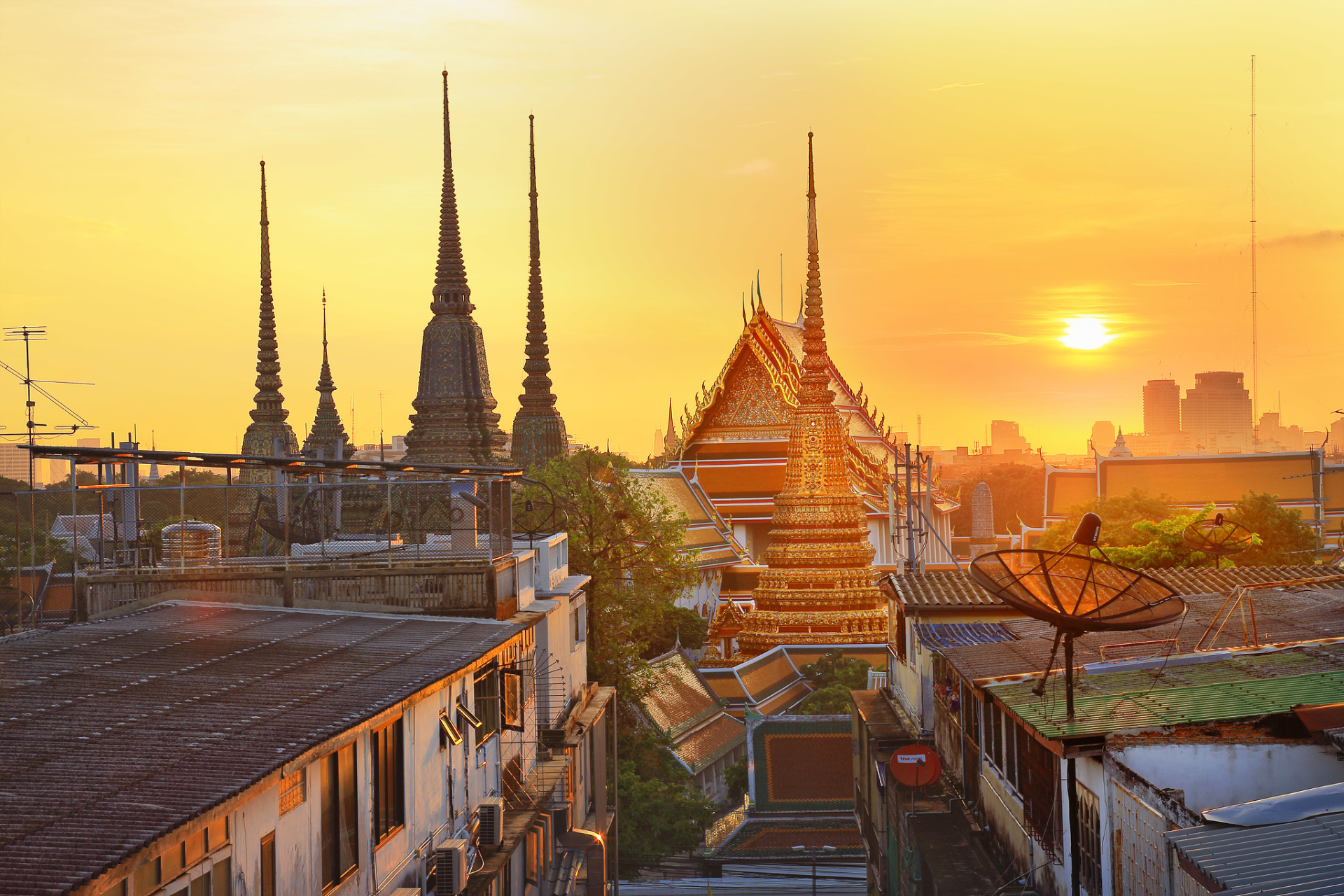
2. Island Hop in the Andaman Sea and Gulf of Thailand
Thailand’s islands are legendary. From the party energy of Koh Phi Phi to the tranquil beauty of Koh Lipe, there’s an island for every traveler. Go snorkeling in Similan Islands, dive with whale sharks near Koh Tao, or relax on the white sands of Koh Samui or Koh Lanta.
3. Attend a Thai Cooking Class
Learn the secrets behind Thailand’s world-famous cuisine by joining a Thai cooking class. You’ll start at a local market picking out fresh herbs and spices, then cook dishes like Pad Thai, Tom Yum, and Green Curry under the guidance of expert chefs—often in a traditional countryside setting.
4. Witness Yi Peng Lantern Festival in Chiang Mai
Every November, Chiang Mai lights up the sky with Yi Peng, where thousands of glowing lanterns float into the air in a mesmerizing celebration of hope and renewal. It’s one of the most magical cultural events in Southeast Asia and a photographer’s dream.

5. Go Temple-Hopping Across the Country
From the White Temple (Wat Rong Khun) in Chiang Rai to the ancient ruins of Ayutthaya and Sukhothai, Thailand’s temples range from deeply sacred to artistically surreal. Many cities have hundreds of temples, each with its own story and style.
6. Trek in the Mountains of Northern Thailand
Head to Pai, Mae Hong Son, or Chiang Mai for lush trekking trails through forests, rice terraces, and hill tribe villages. Multi-day treks can include homestays with local communities, offering authentic insight into rural Thai life.
7. Visit an Ethical Elephant Sanctuary
Thailand is known for its elephants, and you can experience them respectfully by visiting ethical sanctuaries such as Elephant Nature Park near Chiang Mai. These organizations focus on rehabilitation, education, and creating safe, cruelty-free environments for the animals.
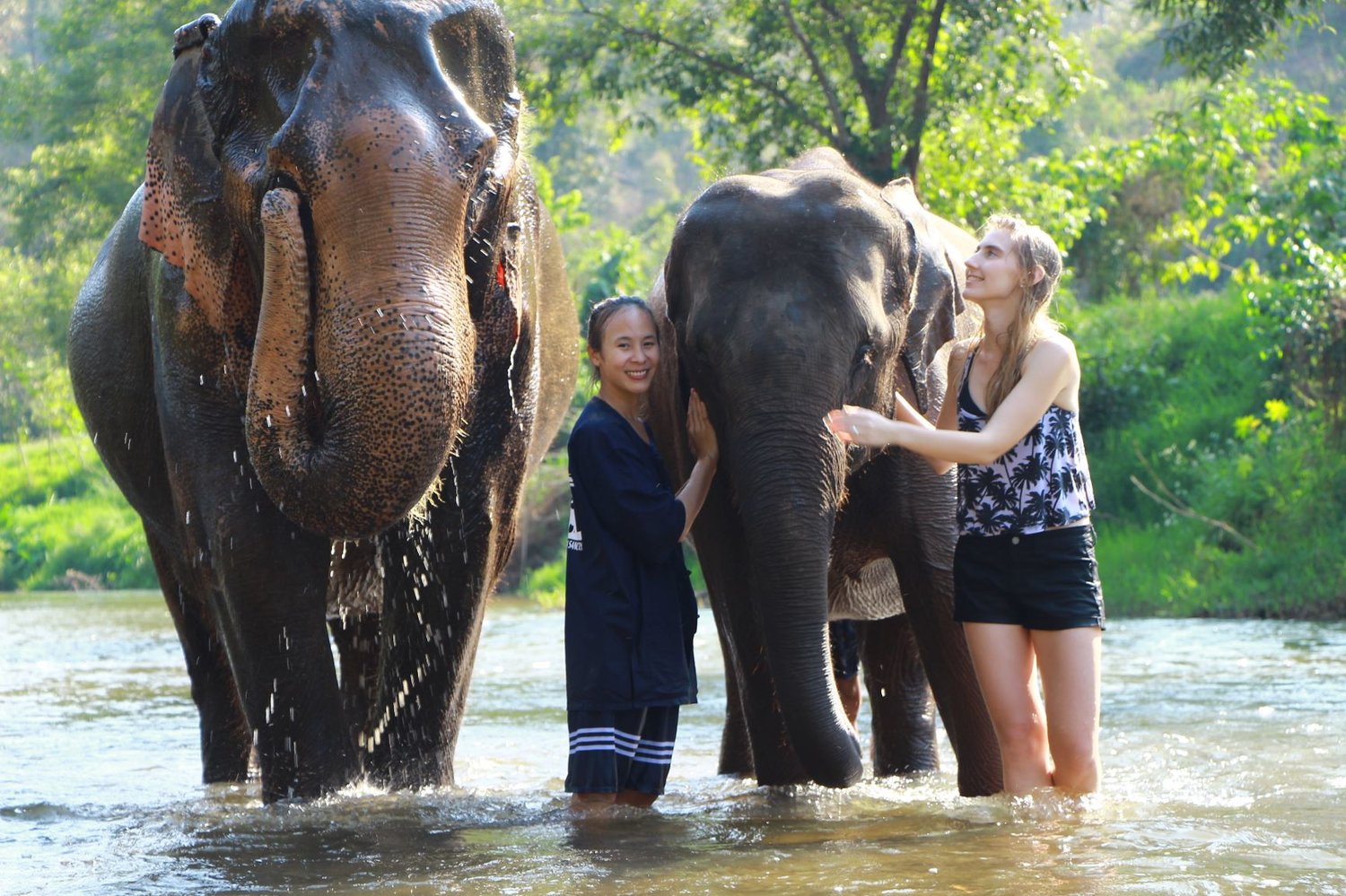
8. Shop and Snack at a Night Market
Thai night markets are vibrant, sensory experiences. Whether it’s Chiang Mai’s Sunday Walking Street, Bangkok’s Chatuchak Market, or a beachside night bazaar in Phuket, expect an exciting mix of local crafts, street performances, and endless street food stalls.
9. Experience Thai Massage and Spa Treatments
Treat yourself to a traditional Thai massage—a therapeutic blend of stretching, acupressure, and deep-tissue work.
Other Articles
YOU MAY ALSO LIKE

23 DAYS - Private Vietnam 23 Days 22 Nights - Major of VietNam Trip
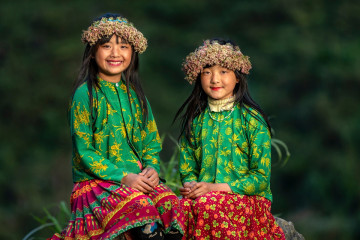
19 DAYS - Private Vietnam 19 Days 18 Nights - Explore Vietnam
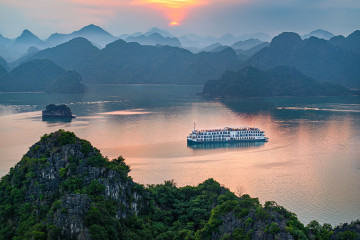
38 DAYS - Private Vietnam- Laos- Cambodia- Thailand 38 Days 37 Nights - Indochina Odyssey
Speak to Your Local Travel Expert





